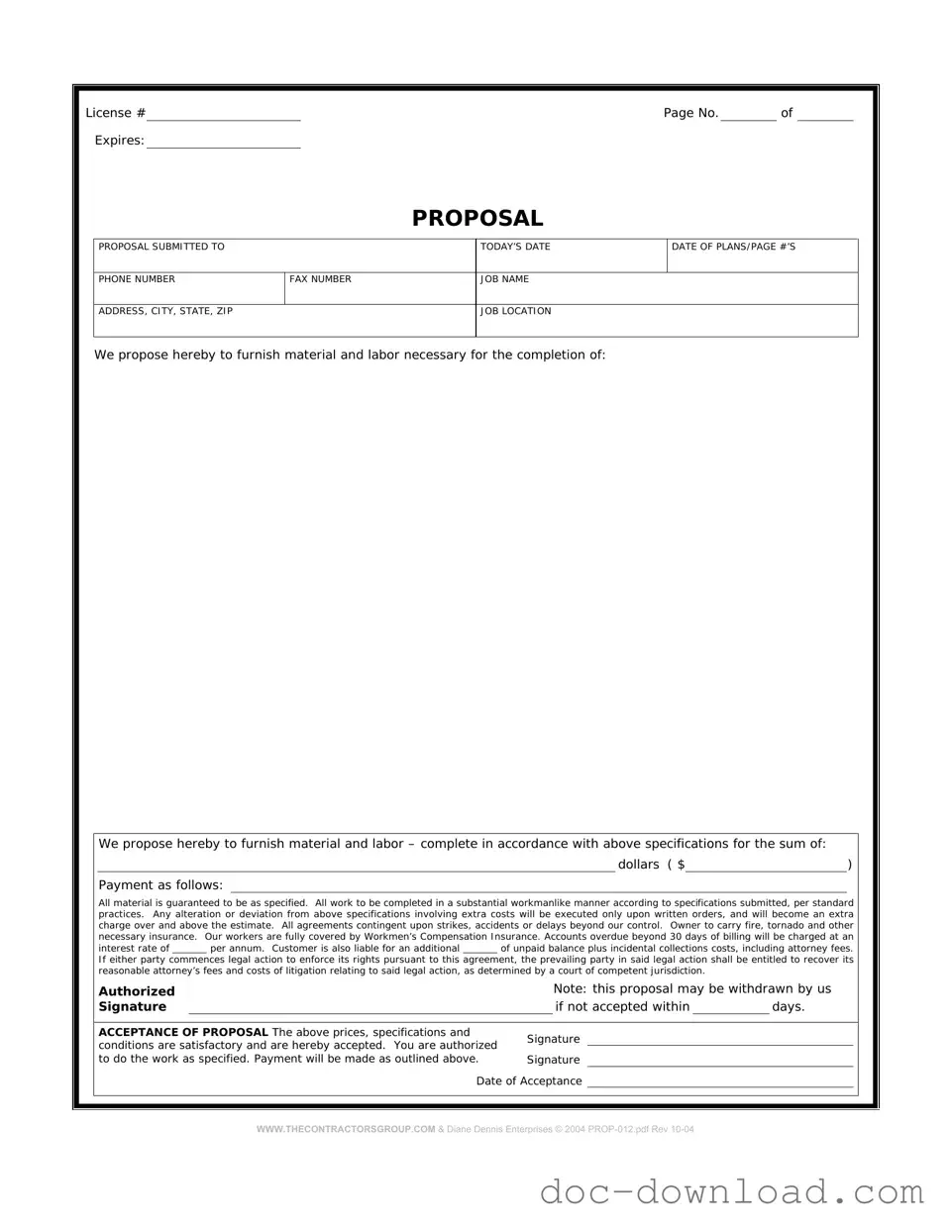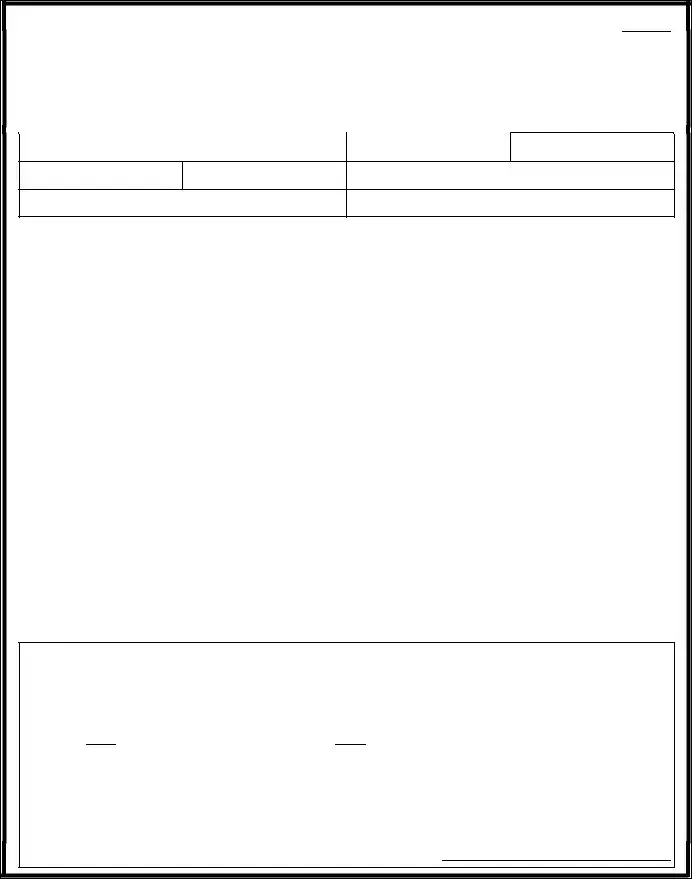The construction contract is a fundamental document in the building process. It outlines the responsibilities of both the contractor and the client. Much like a construction proposal form, it details the scope of work, timelines, and payment terms. Both documents serve to clarify expectations and protect the interests of both parties involved.
A bid proposal is another document that shares similarities with a construction proposal form. It is often submitted by contractors in response to a project invitation. This document includes pricing, project timelines, and qualifications. Both documents aim to persuade the client to choose a specific contractor for the job.
The scope of work document is crucial in construction projects. It defines what work will be completed and the specific tasks involved. Similar to a construction proposal form, it sets clear boundaries and expectations, helping to avoid misunderstandings later on in the project.
A request for proposal (RFP) is often used by clients when seeking bids from contractors. This document outlines the project requirements and invites contractors to submit their proposals. Like the construction proposal form, an RFP encourages clear communication and helps clients evaluate their options.
The change order form is used when modifications to the original construction plan are necessary. It documents any changes in scope, cost, or timeline. This form is similar to a construction proposal form because it serves to keep all parties informed and aligned on project adjustments.
A letter of intent is a preliminary agreement that signals the intention to enter into a contract. It outlines the main terms and conditions of the future contract. Like a construction proposal form, it establishes a mutual understanding between the parties before finalizing the details.
The project timeline is a document that lays out the schedule for the construction project. It details key milestones and deadlines. Similar to a construction proposal form, it helps keep everyone on track and ensures that the project progresses smoothly.
Understanding the intricacies of property transactions can significantly ease the process for both buyers and sellers. One important tool in this realm is the Florida Quitclaim Deed, which facilitates the transfer of property ownership while leaving the title's validity unguaranteed. This document is often utilized in personal situations, such as transferring property among family members or making gifts. To learn how to effectively fill out the necessary forms for these transactions, you can visit https://quitclaimdocs.com/fillable-florida-quitclaim-deed.
A subcontractor agreement is used when a contractor hires another company to complete part of the work. This document specifies the terms of the subcontractor’s responsibilities. Both the subcontractor agreement and construction proposal form aim to clarify roles and expectations in the project.
A project budget is a financial document that outlines the estimated costs associated with a construction project. It includes materials, labor, and other expenses. Similar to a construction proposal form, it helps ensure that the project stays within financial limits and that all parties are aware of the costs involved.
The final inspection report is created at the end of a construction project to ensure that everything meets the required standards. It serves as a confirmation that the work has been completed as agreed. Like the construction proposal form, it provides documentation that can be referenced later if any disputes arise.

